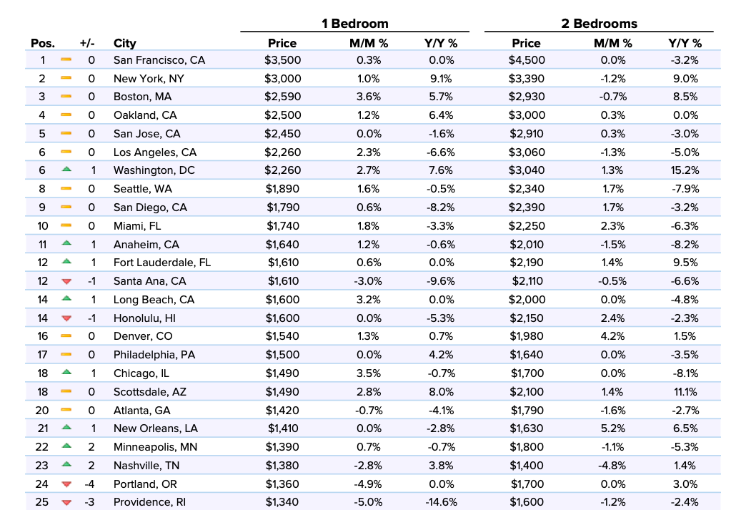In January, the rental prices for a one-bedroom and two-bedroom unit decreased from the previous month, falling by 0.4% and 0.3%, respectively, according to Zumper’s National Rent Report.
It now costs the average renter a median of $1,217 and $1,460 to rent the average one-bedroom and two-bedroom units. This equates to an annual decrease of 0.3% and an annual increase of 0.6%, respectively.
“In the first National Rent Report for the year, the top 10 markets saw relatively flat monthly changes but year over year changes were much larger in some cities,” Zumper writes. “Notable markets with large year over year changes included New York, with one- and two-bedroom rents both up around 9%, Washington D.C., with one bedroom rent up 7.6% and two-bedroom rent up 15.2%, and San Diego, with one bedroom rent down over 8%.”
Zumper notes that the nation’s top three rental markets San Francisco, New York and Boston, all experienced notable increases in rental prices from the previous month.
In San Francisco, renters saw their one-bedroom rental prices rise by 0.3% to $3,500, slightly increasing from the previous month’s record, while two-bedroom units held steady at $4,500.
New York renters also experienced an increase in their rent, as prices for one-bedrooms grew by 1% to $3,000. Meanwhile, two bedrooms fell to $3,390.
Rent in Boston climbed by 3.6% to $2,590 for one-bedrooms, while prices for two-bedroom units declined by 0.7% to $2,930.
According to Zumper, Des Moines, Iowa had the fastest growth rate for one-bedroom units as rent increased by 4.9% to $860, moving the city up to the 70th priciest rental market in the nation.
On the other end of the spectrum, Zumper says one-bedroom units in Laredo, Texas had the largest monthly decline rate, as prices fell by 5.3% to $710. On an annual basis, rent prices for one-bedroom units are down 14.5% in the city.
The chart below displays the 25 most expensive rental markets and how they moved in September, according to Zumper.

NOTE: The Zumper National Rent Report analyzes rental data from over 1 million active listings across the country. Data is aggregated on a monthly basis to calculate median asking rents for the top 100 metro areas by population.






